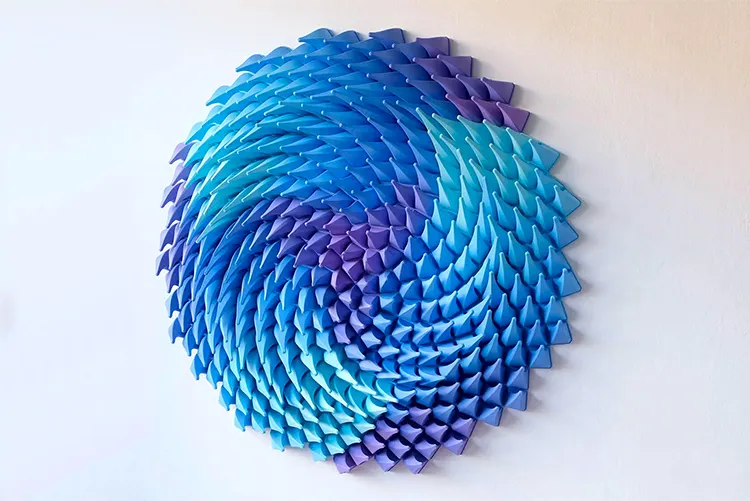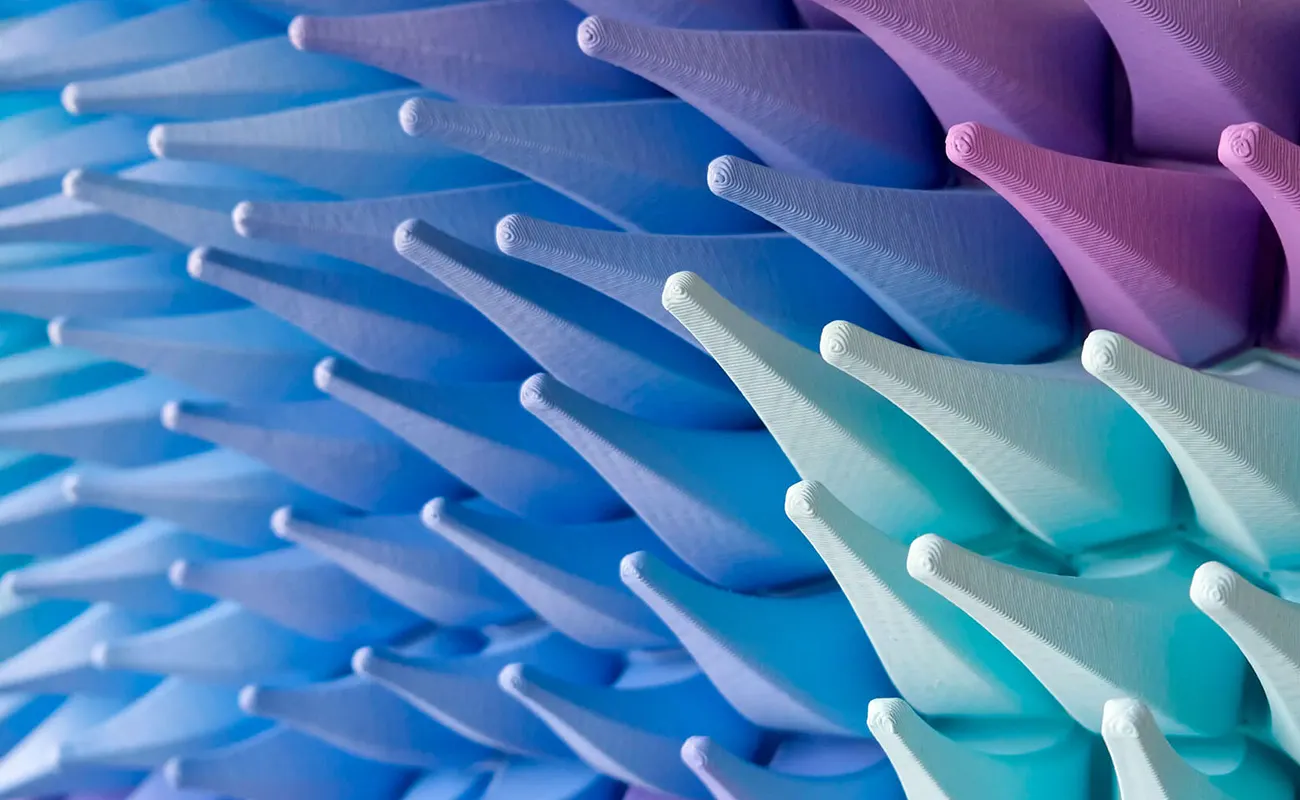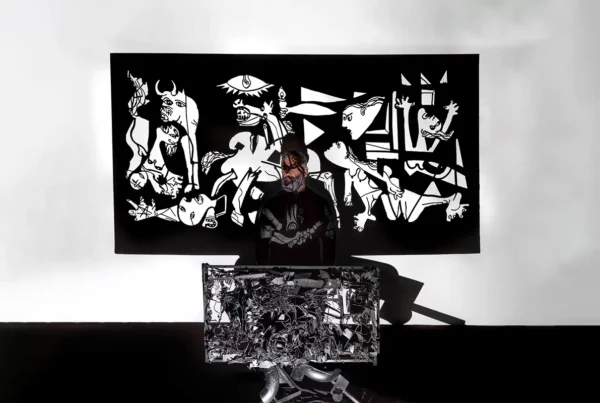The Fusion of Chaos and Order in Organic Precision
Herschel Shapiro’s work stands at the crossroads of nature, mathematics, and technology, embodying what he calls Organic Precision. This distinctive artistic approach merges the fluid spontaneity of natural forms with the rigorous structure of computational design, resulting in sculptures that feel both meticulously engineered and organically alive. His fascination with the hidden logic governing the natural world—seen in everything from the spirals of nautilus shells to the turbulence of ocean currents—fuels his creative process. Rather than merely imitating nature, Shapiro translates its underlying mathematical principles into three-dimensional forms, giving physical presence to patterns often invisible to the human eye.
At the heart of his process is the idea of modular construction. Each sculpture is meticulously designed as an assemblage of repeating components that interlock in harmonious unity. This repetition echoes the fractal-like patterns found in nature, where self-similarity appears at different scales, from microscopic structures to planetary formations. By constructing his pieces in this way, Shapiro’s art conveys a sense of motion and transformation, as if capturing a moment in an ongoing dynamic process. The result is an interplay of structure and fluidity, where rigid geometric precision coexists with the organic flow of natural forces.
Digital fabrication plays a central role in bringing his vision to life, allowing him to explore levels of detail and complexity that traditional sculpting methods could not easily achieve. His preferred medium, 3D printing, enables him to materialize intricate designs inspired by vector fields, aerodynamic forces, and natural symmetries with extraordinary accuracy. Yet, technology alone does not define his work—each piece undergoes extensive hand-finishing, ensuring that the final sculpture possesses a refined tactility that enhances its illusion of movement. In this way, Shapiro’s art exists at the intersection of algorithmic precision and human craftsmanship, embodying both the logic of nature and the artistry of its interpretation.
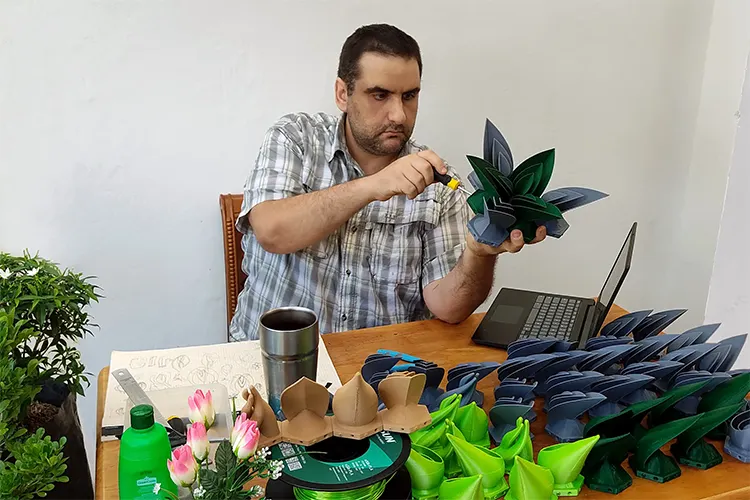
Herschel Shapiro: Revealing the Mathematical Beauty of Nature
Shapiro’s artistic journey is driven by an enduring fascination with the hidden order that shapes the natural world. From the rhythmic spirals of galaxies to the branching structures of river deltas, he finds inspiration in the way patterns emerge across multiple scales. His work is an exploration of these universal principles, distilling them into sculptural forms that evoke both scientific elegance and artistic wonder. The repetition of geometric motifs in his work is not merely decorative; it serves as a visual language that communicates the inherent logic underlying organic structures.
One of the key principles informing his sculptures is the concept of dynamic equilibrium—the balance between forces that create movement while maintaining structural integrity. This principle can be observed in countless natural phenomena, such as the aerodynamics of bird wings or the self-organizing patterns in fluid dynamics. By incorporating these ideas into his designs, Shapiro’s sculptures appear to defy static rigidity, instead embodying a sense of perpetual motion. The interplay between concave and convex surfaces, spiraling arrangements, and undulating gradients all contribute to this illusion, making his pieces feel as if they are shifting and evolving before the viewer’s eyes.
Color is another crucial element in his work, used to amplify the perception of motion and depth. Inspired by natural color transitions—such as the iridescence of butterfly wings or the shifting hues of ocean waves—he employs gradient techniques to enhance the organic feel of his sculptures. By carefully layering pigments and adjusting color intensity based on how light interacts with the form, he creates visual effects that make the sculptures appear almost kinetic. This attention to detail ensures that each piece not only captures the mathematical essence of nature but also resonates with an emotional and sensory depth that draws the viewer into its intricate world.
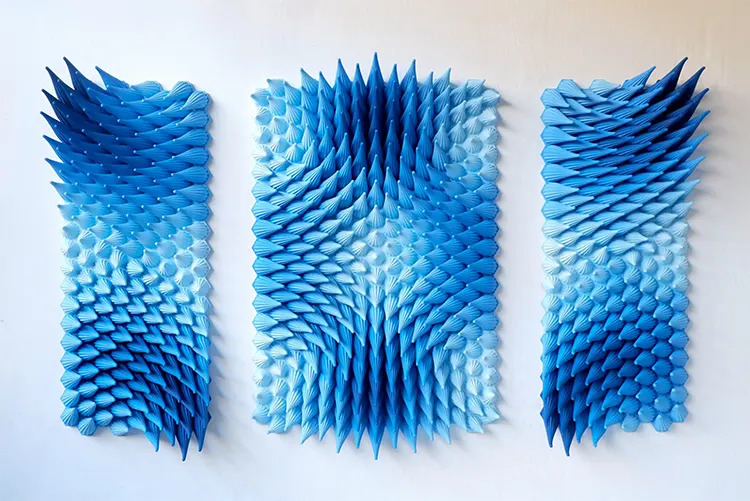
Bridging Art, Technology, and Sustainability
Shapiro’s dedication to innovation is matched by his commitment to environmental consciousness. With nature as both his inspiration and subject, sustainability plays a fundamental role in his practice. He primarily works with sustainably sourced bioplastics, a choice that aligns with his philosophy of creating art that respects and preserves the natural world. Unlike petroleum-based plastics, these materials offer durability while minimizing ecological impact, allowing him to push the boundaries of digital fabrication without compromising environmental responsibility.
His process integrates both advanced technology and traditional handcrafting techniques. Each sculpture begins as a digital model, where he experiments with algorithmic patterns and structural arrangements. Once finalized, the design is 3D-printed in segments, which are then individually sanded and polished to ensure seamless integration. The final steps involve meticulous assembly and the application of custom color gradients, enhancing the sculpture’s sense of fluidity and depth. This hybrid approach—where cutting-edge digital tools coexist with the tactile precision of hand-finishing—results in artworks that feel both futuristic and deeply rooted in the physical world.
Beyond the materials and techniques, Shapiro’s approach to making his work accessible also reflects his broader artistic philosophy. His sculptures are available through platforms like Etsy, where he offers variations in patterns and color schemes, ensuring that his work reaches a wider audience without losing its essence as fine art. By making his pieces available beyond gallery spaces, he challenges traditional notions of exclusivity in the art world, emphasizing that intricate, thought-provoking design can be part of everyday environments. This democratization of art allows more people to engage with his vision, fostering a deeper appreciation for the connections between nature, mathematics, and modern fabrication.
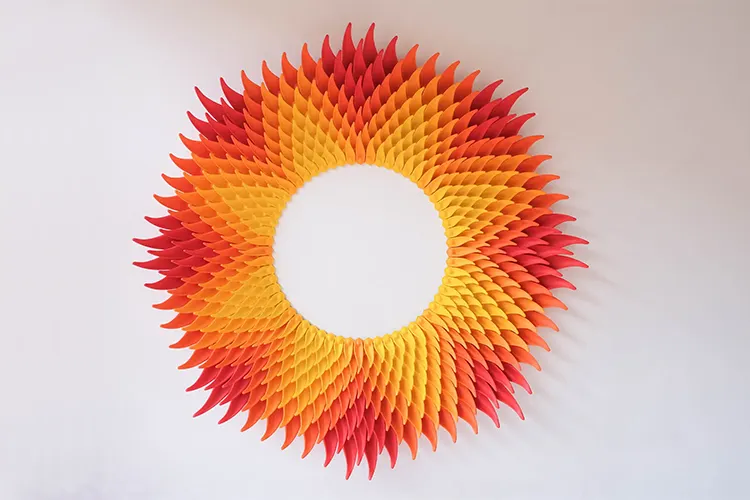
Herschel Shapiro: Capturing the Motion of Invisible Forces
Among Shapiro’s most compelling works is Maelstrom, a piece that exemplifies his mastery of Organic Precision. Inspired by the swirling forces of whirlpools and atmospheric turbulence, the sculpture captures the chaotic yet structured energy of spiraling currents. Its design features a series of repeated, petal-like forms arranged in a radiating vortex, creating a mesmerizing sense of motion. The interplay of depth and curvature makes the piece appear as if it is in a perpetual state of swirling transformation, a moment of fluidity frozen in time.
The illusion of movement is further intensified by its gradient color scheme, which transitions smoothly from one hue to another, reinforcing the sensation of dynamic flow. By carefully calibrating color shifts, Shapiro enhances the sculpture’s three-dimensional presence, making it feel as though it is alive with energy. This interplay between structure and fluidity encapsulates the essence of his artistic philosophy—blending precision with organic spontaneity to create forms that feel simultaneously mathematical and natural.
Ultimately, Shapiro’s work invites viewers to reconsider the world around them, revealing the intricate patterns that govern both the microscopic and the cosmic. His sculptures are more than static objects; they serve as visual translations of the unseen forces shaping our universe. By making these patterns visible, he bridges the gap between art, science, and technology, offering a perspective where complexity and beauty exist in perfect harmony. Through his exploration of Organic Precision, Shapiro continues to push the boundaries of digital fabrication, transforming abstract mathematical principles into tangible expressions of movement and form.
